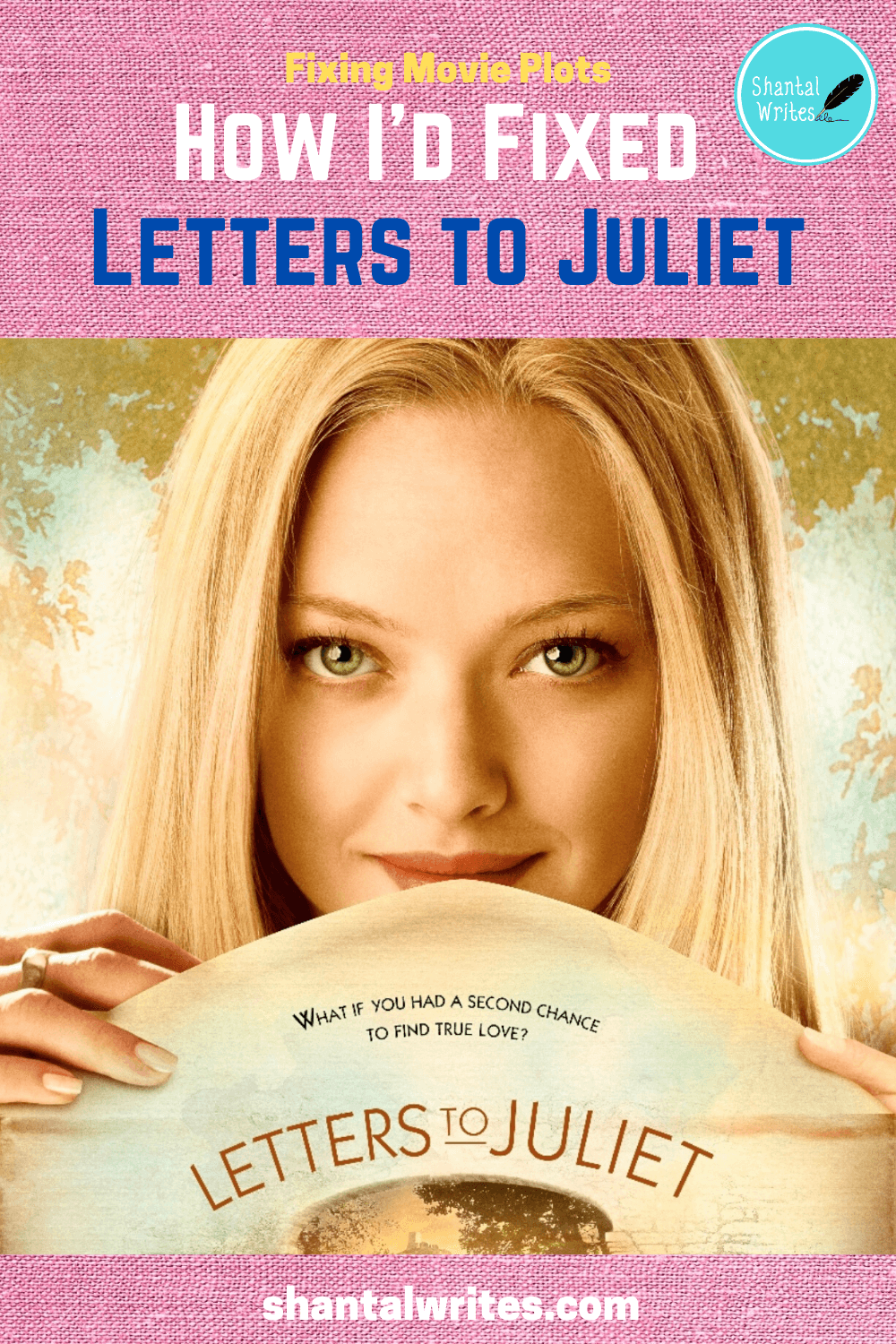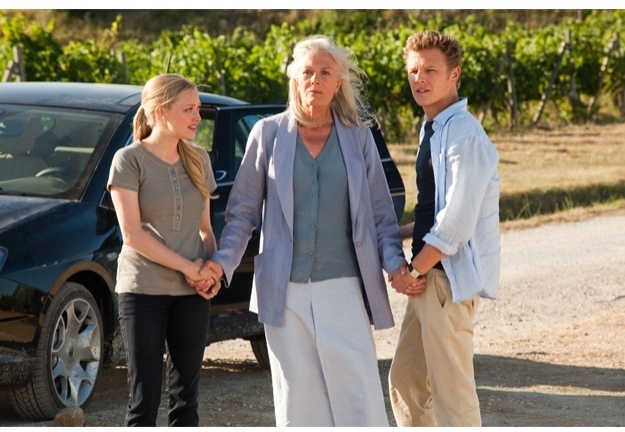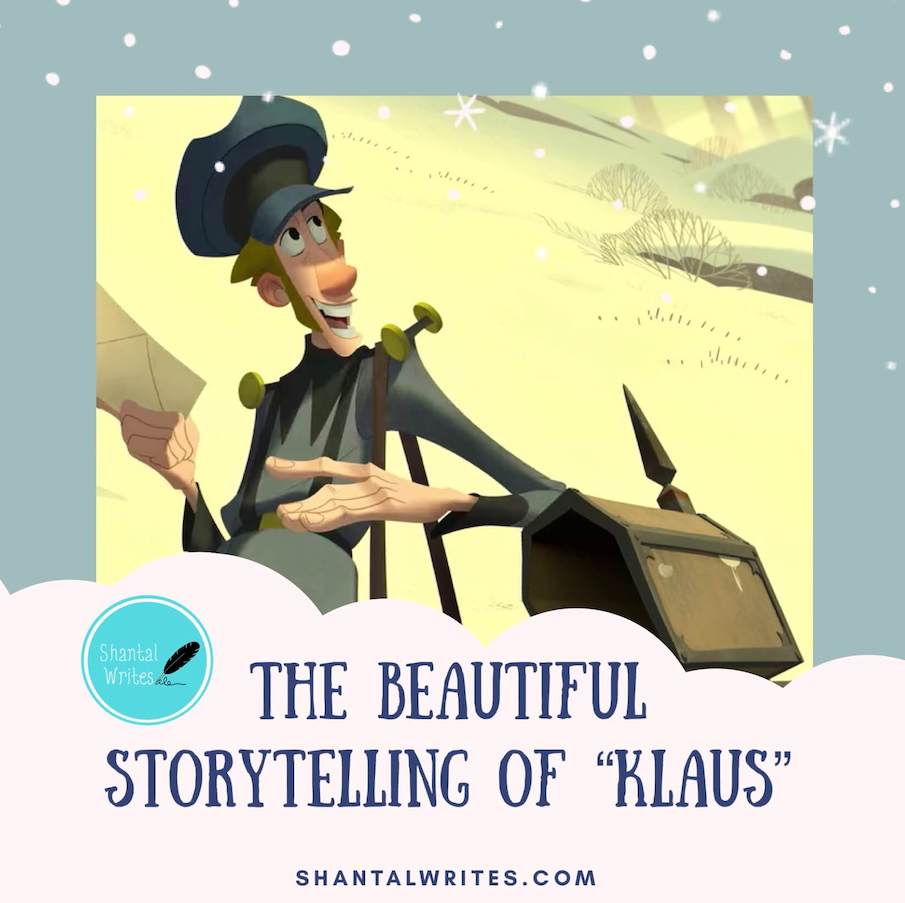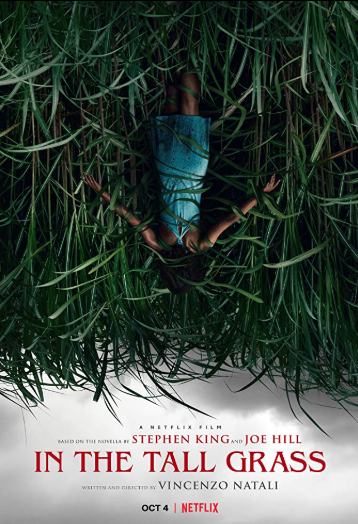
After watching YouTuber and novelist Rachael Stephens’s Plot With Me Series, where she shows us the plot embryo in action by fixing movie plots, I’ve been inspired to try my hand at repairing movie plots. For me, it’s a fun way to practice plotting and editing. I’ve been practicing for a while, and now, I want to start a series here on my blog.
To start things off, this week’s “plot-repair” is for the movie Letters to Juliet (2010). I watched this movie about two years ago and while it was very bland, for some reason it stuck with me. I think it’s because of it wasted potential and for that, I was determined to fix it.
The Premise
Letters to Juliet stars Amanda Seyfried as Sophie, a NYC based fact-checker who longs to be a writer. While on a vacation in Verona with her fiancé, Sophie discovers The Secretaries of Juliet: a group of volunteers who answer letters asking for advice, addressed to Shakespeare’s famed heroine. One day while collecting letters, Sophie finds an unanswered one written decades ago. Excited by this odd find, Sophie replies. The letter’s recipient, Claire, is so moved by her response, that she travels to Verona with her grandson, Charlie, to follow Sophie’s advice. Sophie vows to help reunite the lovers from the letter, in a quest that leads them across Italy.
Problems With the Movie
What drew me to Letters to Juliet was the setting. It takes place in the beautiful Verona, and other dreamy Italian locations. I love travel films and I thought this story would be a European adventure where a young woman finds these romantic letters and tries to find the owners of them with the help of a snarky companion. That… was sadly not the case…
Letters to Juliet just doesn’t know what story it wants to tell. It’s very obvious that it was written from the “Secretaries of Juliet” concept, which is an actual thing in Verona, however, it doesn’t do much with it. It’s a springboard for a romance story set in a beautiful city, but in the end it’s a movie about many things that don’t seem to be connected. Some of its major problems include a passive protagonist, coincidental series of events, and little use of its setting.
A Passive Protagonist

Sophie is a flat character. She doesn’t have a personality, depth or a goal. Sure, she wants things; like, to be a writer and to spend more time with her fiancé, but she doesn’t go after them and it’s not clear why. This lack of motivation could be a character flaw, but the movie never addresses them as such. Sophie’s desires and flaws are not tested by this plot. She really has nothing at stake when she decides to help reunite the letter’s lovers. Which leads me to my next point: this story doesn’t seem to be about Sophie. You can switch her out for some other character and it would not affect what happens in this movie.
Little Use of Setting
Then there’s the wasted potential with the setting. There are, of course, these beautiful shots of Verona and the other surrounding towns, but they mostly exist as backdrop for scenes or montages. This is a story about a quest to find someone, but it doesn’t actually take its time going to different locations and these locations don’t affect the events of the story.
Fixing Letters to Juliet
I’m a little ashamed to admit that I’ve been trying to fix this movie—on-and-off— for a little over a year now. I tried changing Sophie by adding to her backstory and exploring possible reasons behind her passion for writing. I tried to find connections between what I knew of her character and the premise of this film, but, I just couldn’t connect the dots. It felt like I was grasping at straws. And then it hit me: what if I just, switch the protagonists?
Charlie as the Protagonist

Although he is set up as Sophie’s adversary-turned-love-interest, Charlie is the character that needs to change the most and is directly effected by the main conflict. Which makes him the perfect protagonist for this film.
Christopher Egan portrays Charlie as a seemingly stuck-up rich boy who has no time for romantic relationships. However, this is a facade of a man jaded by past heartache. The movie shares with us Charlie’s experiences with a painful breakup, and perhaps an even deeper wound, being tragically orphaned at a young age. He maintains a bachelor persona to get by, but deep down, he’s unhappy. The only solace he finds is with the woman who raised him: his grandmother, Claire.
To raise the stakes, I made his grandmother’s aging a prominent problem. Maybe her health is declining, which really triggers Charlie’s fears of losing the only person he loves. That’s why something like, Claire getting a letter about her long lost love in Verona is such a good event to rock his world. When his grandmother makes the decision to find her lost love in Verona, Charlie has not other choice but accompany her, at the risk of his own sense of safety. Charlie is directly involved with and affected by the story’s conflict.
Sophie as the Love Interest

We can then introduce Sophie as the character who assists in their quest and as Charlie’s potential love interest. She could be a researcher or a journalist that wants to help reunite the lovers. Maybe she has experience writing about reuniting people, and/or experience in finding them. She’s very passionate about her work and it is her enthusiasm that puts her in direct conflict with Charlie. As they work together for a common goal, Sophie will challenge Charlie’s beliefs and push him towards the truth of the theme.
Sophie would have her own story as well. She hasn’t hit it big yet as a writer, and she’s in a passionless relationship with her boyfriend. Her time away in Verona with Claire and Charlie will open her eyes to new opportunities that will have her questioning her decisions and wanting more out of love and life.
A Better Use of Setting

Since Sophie is a researcher and they must travel to find Claire’s lost love, this will take them across Verona, where they will have to collect clues. In this way, the setting plays an active role in the story’s conflict.
A Compelling Premise
So, now we have a new premise: a man who doesn’t believe in love, has to help his aging grandmother find her long lost love. Isn’t that interesting? This premise has conflict and momentum. Will Charlie and Claire find her lost love, and, will Charlie be destined to be alone?
In my opinion, this would make for a far more interesting story where things don’t just happen on coincidence, where it feels emotionally resonant, and where we have a proactive protagonist who we can relate to, and whose plight we can be invested in.
So, what do you think of my reworking of Letters To Juliet? Have you watched this movie before? Do you think my new premise which makes Charlie the protagonist makes for a more interesting movie? Tell me about it in the comments below!

Hi! Shantal here. I’m a writer and a storyteller. I created Shantal Writes to share my experiences with writing fiction. I also provide new writers with tips, tools, and writing advice. I hope you find something helpful while you’re here!
More On Shantal Writes




